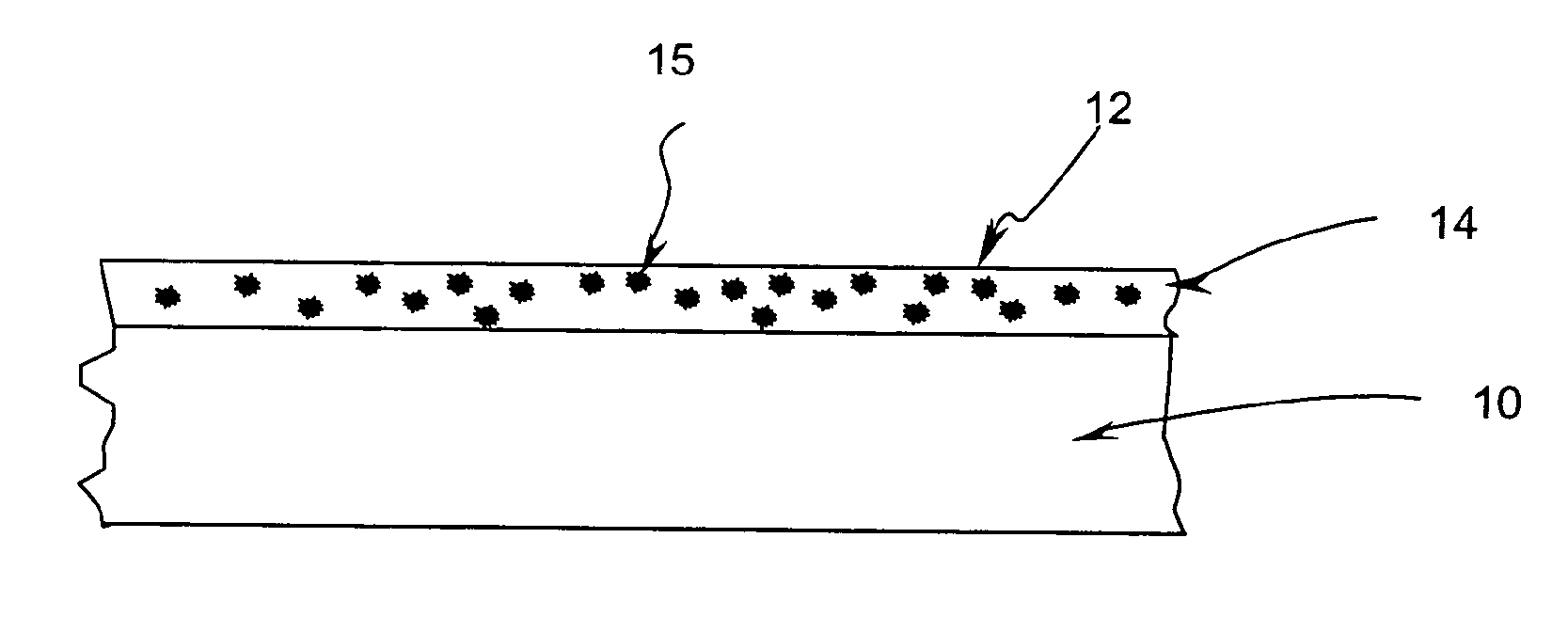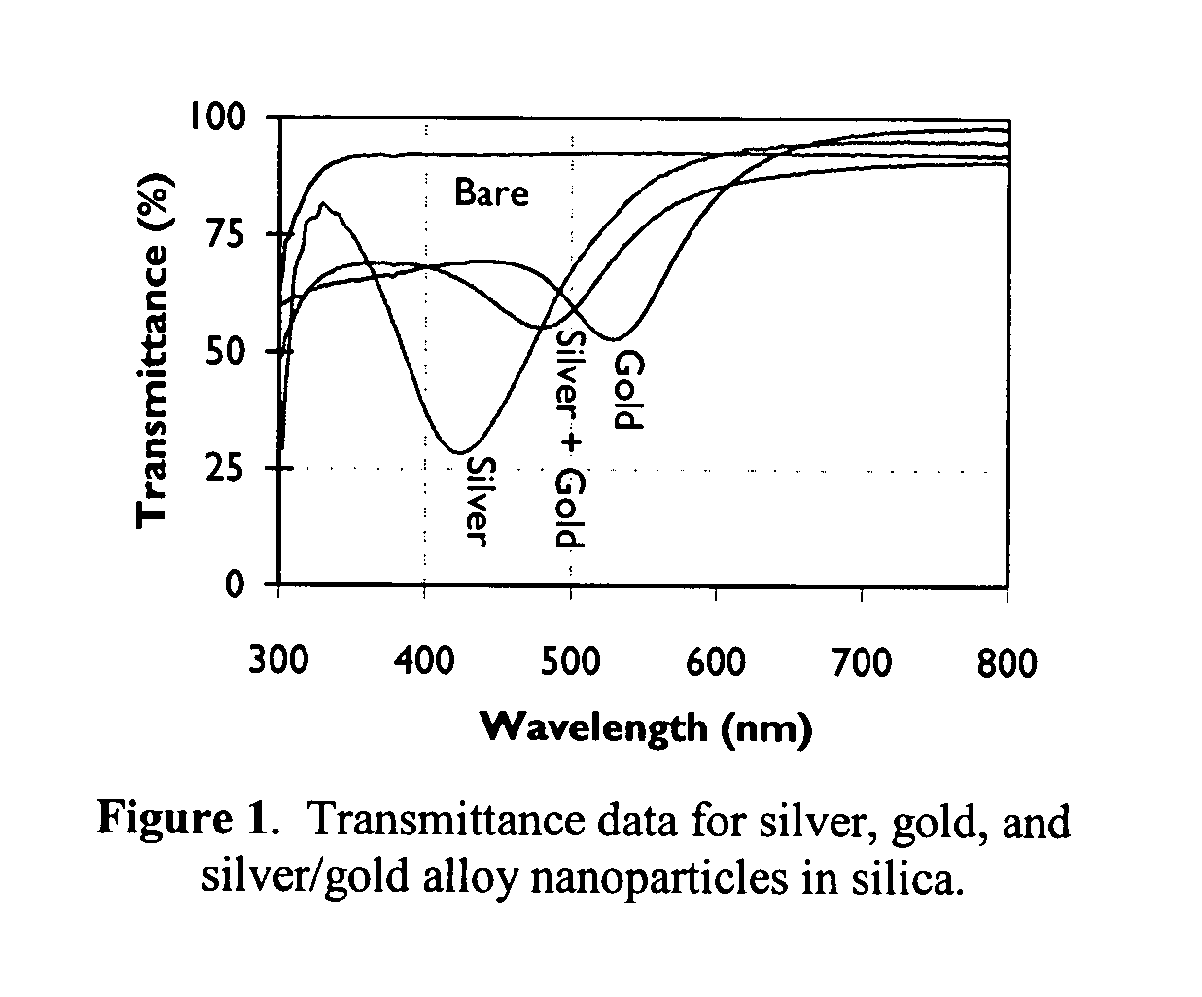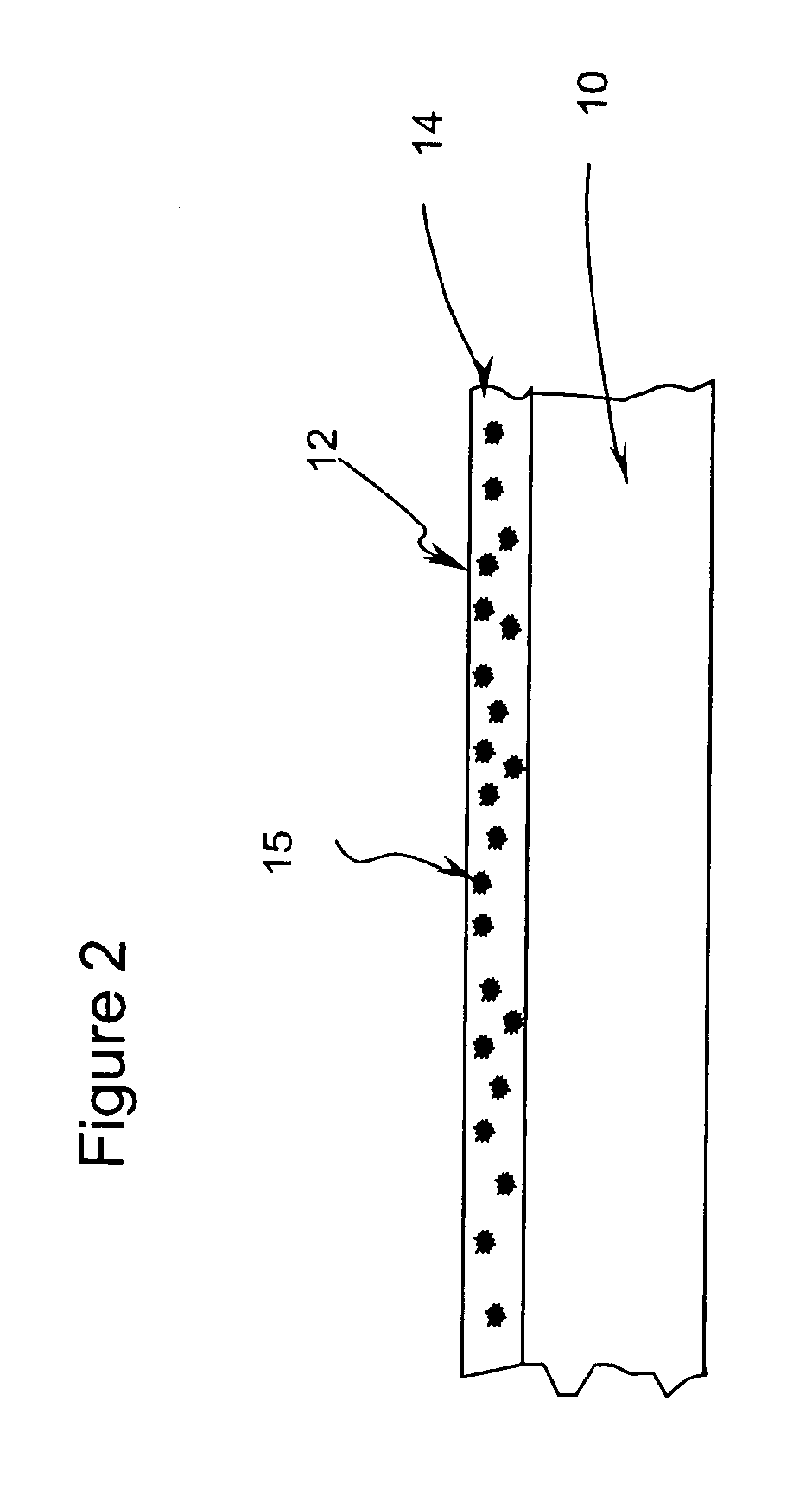Optical coating
a technology of optical coating and coating layer, applied in the field of optical coating, can solve the problems of reduced light transmission at all wavelengths, high angle sensitivity, and complex design
- Summary
- Abstract
- Description
- Claims
- Application Information
AI Technical Summary
Problems solved by technology
Method used
Image
Examples
Embodiment Construction
[0036]Nanoparticles of semiconducting compounds, e.g., III-V compounds and semiconductive oxides, and metals and metal alloys are useful in the invention, although metallic nanoparticles are of most immediate interest herein. The metal or metal alloy must be capable of altering optical transmission through surface plasmon resonance. For many applications, oxidation-resistant metals, particularly gold and silver are preferred, as well as oxidation-resistant alloys of gold and silver. Gold and silver nanoparticles are known to alter optical properties, e.g., color, within the visible range. Platinum and platinum alloys are other useful materials for forming nanoparticles that exhibit surface plasmon resonance, although platinum generally has its maximum absorption peak in the UV range, a useful property for many applications. Other metals and alloys may alter optical properties at various wavelengths throughout the UV, visible and IR spectra and even more broadly throughout the electr...
PUM
| Property | Measurement | Unit |
|---|---|---|
| volume percent | aaaaa | aaaaa |
| particulate diameters | aaaaa | aaaaa |
| thick | aaaaa | aaaaa |
Abstract
Description
Claims
Application Information
 Login to View More
Login to View More - R&D
- Intellectual Property
- Life Sciences
- Materials
- Tech Scout
- Unparalleled Data Quality
- Higher Quality Content
- 60% Fewer Hallucinations
Browse by: Latest US Patents, China's latest patents, Technical Efficacy Thesaurus, Application Domain, Technology Topic, Popular Technical Reports.
© 2025 PatSnap. All rights reserved.Legal|Privacy policy|Modern Slavery Act Transparency Statement|Sitemap|About US| Contact US: help@patsnap.com



